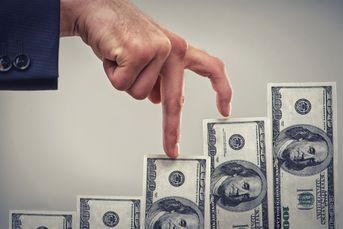Treasury buyers made a killing off Washington’s game of chicken
 U.S. debt investors to John Boehner: Thank you, Mr. Speaker.
U.S. debt investors to John Boehner: Thank you, Mr. Speaker.
Ten-year notes returned 1.83% in July; 'market saw through the debate'
For all the anxiety among politicians and their constituents over playing chicken with the debt ceiling and the prospect of the first-ever downgrade of U.S. debt, the people with the most at stake made more money buying Treasury securities in July than any month this year. Actually, they made a fortune, or $183,000 for every $10 million invested.
While commentators bemoaned America’s lost respect around the world, investors from Argentina to New Zealand snapped up Uncle Sam’s bonds in the $9.34 trillion market, driving yields on 10-year notes — a benchmark for everything from mortgage rates to corporate debt — to the lowest levels since November. U.S. government debt returned 1.83 percent in July, about three times more than the rest of the global sovereign bond market, Bank of America Merrill Lynch index data show.
“The bond market saw through the debate and saw that it would have to be resolved,” said Mark MacQueen, a partner and money manager at Austin, Texas-based Sage Advisory Services, which oversees $9.5 billion. “The market expected a resolution, which is less spending, hitting future growth, which is not good for stocks but is good for bonds.”
The Senate voted today to raise the nation’s debt ceiling, currently $14.3 trillion, for the 79th time since 1960, before missing a payment. As a bonus to bond investors, the government will reduce spending by $2.4 trillion or more.
Target Rate
While an increase in the borrowing limit would avert a default, it may not be enough to save the U.S.’s top AAA credit rating. Bond yields show investors are also concerned that the reduction in outlays by the government will weigh on growth at a time when reports on everything from manufacturing to jobs show the economy is weakening.
Interest-rate futures signal traders are pushing back expectations for when the Federal Reserve raises its target for overnight loans between banks to 2013. The Standard & Poor’s 500 Index lost 2.03 percent in July, the worst performance since August 2010.
“Regardless of the rating, Treasuries are going to be seen as the safe haven,” said Matthew Freund, a senior vice president at USAA Investment Management Co. in San Antonio, where he helps oversee about $50 billion in mutual fund assets. “The U.S. remains one of the strongest, most dynamic economies in the world.”
The benchmark 10-year Treasury note’s yield fell as low as 2.67 percent today, down from 3.014 percent on July 22, when President Barack Obama complained that he had been “left at the altar” by Republicans who walked away from talks to avoid a default.
Yield History
The yield is below the 4.05 percent average over the past decade and the average of 5.48 percent when the U.S. was running a budget surplus from 1998 through 2001.
Treasuries yield about 0.7 percentage point less than the rest of the world’s sovereign debt markets, Bank of America Merrill Lynch indexes show. The difference has expanded from 0.15 percentage point in January and is the most since 1993 when the data began. July’s returns for Treasuries compare with 0.62 percent for the rest of the world.
In auctions of two-, five- and seven-year notes last week totaling $99 billion, indirect bidders, a class of investors that includes international central banks, bought 35 percent of the bonds, up from 30 percent in the June sales. Saudi Arabia is pumping oil profits into U.S. bonds even as China, the biggest foreign holder of Treasuries, slows purchases.
‘Highest Quality Asset’
The Saudi Arabian Monetary Agency’s holdings of foreign securities rose 12 percent this year to a record 1.32 trillion riyals ($350 billion) as of June 30, central bank data show. HSBC Holdings Plc estimates a “large proportion” of those investments are in Treasuries. China’s ownership was $1.16 trillion as of May 31, unchanged from the end of 2010, U.S. government data show.
“The bond market wasn’t viewing this as that big of an issue and the Treasury is still the highest quality asset on the globe,” said Hank Smith, the chief investment officer in Philadelphia at Haverford Trust Co., which oversees $6.5 billion.
The bond market has a long history of accurately predicting the future. Economists use the relationship between short-and long-term yields to forecast the nation’s growth. Three-month bill rates have topped 10-year note yields eight times since 1960, with recessions following in six of those cases. There hasn’t been a recession that wasn’t preceded by an inverted yield curve in that period.
S&P Indications
The performance of the bond market also suggests that investors aren’t worried about the U.S. having its credit rating cut and seeing borrowing cost rise.
Standard & Poor’s indicated last week that anything less than a reduction of $4 trillion in spending would jeopardize the U.S.’s AAA. “A grand bargain of that nature would signal the seriousness of policy makers to address the fiscal situation in the U.S.,” John Chambers, chairman of S&P’s sovereign rating committee, said in a video interview distributed by the New York-based firm on July 28.
Moody’s Investors Service said it may assign a “negative” outlook to U.S. debt, depending on the size of the deficit reductions.
“Earlier there seemed to be much more discussion about a much larger deficit reduction packages,” Steven Hess, the senior credit officer at Moody’s in New York, said July 29 in a telephone interview. “The smaller the actual reduction, the more likely a negative outlook.”
‘Bragging Rights’
If the U.S. was cut by S&P or Moody’s for the first time in history, any disruptions would be unlikely in the Treasury market, said Freund of USAA Investment. JPMorgan Chase & Co. estimates that funds holding Treasuries may only need to sell as much as $40 billion of the debt in a downgrade.
“The difference between AA+ and AA and AAA really is going to be very modest outside of bragging rights,” Freund said. “I feel better about Treasuries in the long run if we address the problems now rather than just kicking the can down the road.”
Prospects for lower expenditures by the government come as signs emerge that the economy is faltering with unemployment above 9 percent. Government spending accounts for about 25 percent of gross domestic product, a level exceeded only by three years in the 1940s, according to Bianco Research LLC in Chicago.
The Institute for Supply Management said yesterday that its factory index slumped to 50.9 for July, the lowest since July 2009, from 55.3 a month earlier. Figures less than 50 signal contraction, and the July index was lower than the most pessimistic forecast in a Bloomberg News survey.
“With these numbers that are coming in, we could we be looking at another recession and if so, should we be buying bonds,” said Laura LaRosa, director of fixed income at Philadelphia-based Glenmede, which oversees $20 billion. “When you have slow growth you’re a little bit closer to recession. That makes everybody very concerned.”
–Bloomberg News–
Learn more about reprints and licensing for this article.






